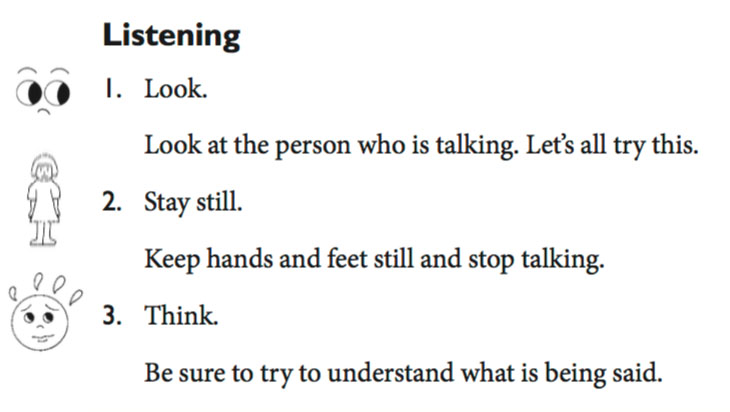We’re excited to feature some tips for teens from Alexandra Jackman on what it means to understand autism and the perspectives of their peers with autism. You may remember Alex from last year, when we shared an exclusive interview from our BCBA Sam Blanco with Alexandra Jackman. Alex is a 15-year-old New Jersey teen and the creator of the documentary A Teen’s Guide to Understanding and Communicating with People with Autism. She’s also been awarded Hasbro and GenerationOn’s scholarship grant for being a “Community Action Hero” and making a difference in her community through hands-on service projects that create awareness for important social issues. Congratulations, Alex!
Understanding Autism: Tips for Teens by a Teen
by Alexandra Jackman
During summer camp when I was eight, I met a girl named Jaime. I noticed that at lunch she always sat by herself with an aide. I assumed she wanted to sit alone, because she never came and sat with the rest of us. One day I was curious, so I hesitantly asked if I could sit with her and the aide replied “yes.” I learned that Jaime had something called cerebral palsy. She couldn’t speak but communicated through hand signals.
Jaime and I started hanging out outside of camp activities, and I really liked her. Just because communicating wasn’t her strong suit didn’t mean that she couldn’t be a friend. I think our friendship helped others in the camp group realize, “Oh, we can hang out with her,” and they started including Jaime in camp activities.
That was the first time I realized that many people don’t take the opportunity to get to know people with special needs. I almost didn’t. If I hadn’t been curious that day, I would have most likely missed out on the opportunity to get to know someone I really liked.
Knowledge Matters
I think knowledge is so important. As a 15-year-old autism advocate, I often notice how other teenagers interact with people with special needs in my school and in my community. I have found that teens (and adults) often ignore their peers with autism not to be mean, but because they do not understand what is “wrong.” People don’t know what to say because they don’t understand what is different. I think that it is important to change this.
Fortunately, there are many resources to teach people about autism. However, very few of those resources teach middle and high school students about special needs. So, as a teen, I have some tips that I think can help spread autism acceptance and understanding to hormonal, moody, creative, curious teenagers. Well, people kind of like me.
While not everyone with autism will have all of these behaviors, these general tips are important to keep in mind whenever you are speaking, studying, hanging out, or working with a classmate or friend with autism:
Be direct: Social cues can often be difficult for people with autism. It’s kind of like texting in real life. When someone texts “What?!” are they angry, excited or disappointed? Do ALL CAPS always mean that someone is yelling at you? Many people with autism cannot always distinguish the tone of what others are saying to understand the emotions behind words. Imagine how much harder it would be to interact with people if everything said to you was said with a monotone voice and blank facial expression. So, when talking to people with autism, try to say what you mean and be straightforward.
Be specific in your communication. Avoid open-ended questions: It is important to realize that for many people with autism, a question like “Do you want to go hang out in town with me?” can be overwhelming, because there are just so many possibilities. Maybe you are going to Starbucks, a diner, or shopping. Maybe you are going to the doctor’s office for a vaccination or to the dentist. What might be less stressful would be to specify exactly where you would be going. For example, asking something like “Do you want to come to the diner with me for lunch?” or “Do you want to go into town with me to see a movie and then go shopping?”
Don’t judge physical behaviors. You do similar things: Many people with autism make repetitive movements called self-stimulatory behaviors, such as flapping their arms or tapping things. Also known as stimming, these behaviors are a way to handle emotions and keep calm. While these movements might seem weird to you, everyone exhibits self-stimulatory behaviors that help them deal with stress. Do you ever bite your nails, twirl your hair, or bite on a pencil? Yeah, that’s stimming, and it’s how you handle your emotions.
Get past the disability and make a friend: Having an autism spectrum disorder is not who a person is, it is just something that they have. So don’t let autism define a person. Get to know who the person is on the inside. You just might meet someone you really like!
WRITTEN BY ALEXANDRA JACKMAN

Alex Jackman is a 15-year-old autism advocate and the writer and director of the documentary, A Teen’s Guide to Understanding and Communicating with People with Autism. A high school sophomore in Westfield, NJ, she is currently the peer mentor leader for monthly special needs teen nights and the founder of The Hangout Club, a program at her school to promote inclusion. She is also a special needs volunteer at the YMCA, The Friendship Circle, and Children’s Specialized Hospital. She has received a number of honors for her advocacy efforts and speaks to students, adults, and professionals throughout New Jersey and beyond about autism.

 Teaching these desirable behaviors can often feel challenging with the additional stresses of a special education classroom. One curriculum I have found effective in addressing this problem is Skillstreaming. I often use Skillstreaming in Early Childhood with young learners, and love that it clearly defines desirable behaviors, such as how to listen or how to offer help (see image below), but provides those definitions in simple terms with visual prompts that help our young learners. It also incorporates positive reinforcement for learners who are engaging in those desirable behaviors.
Teaching these desirable behaviors can often feel challenging with the additional stresses of a special education classroom. One curriculum I have found effective in addressing this problem is Skillstreaming. I often use Skillstreaming in Early Childhood with young learners, and love that it clearly defines desirable behaviors, such as how to listen or how to offer help (see image below), but provides those definitions in simple terms with visual prompts that help our young learners. It also incorporates positive reinforcement for learners who are engaging in those desirable behaviors.






